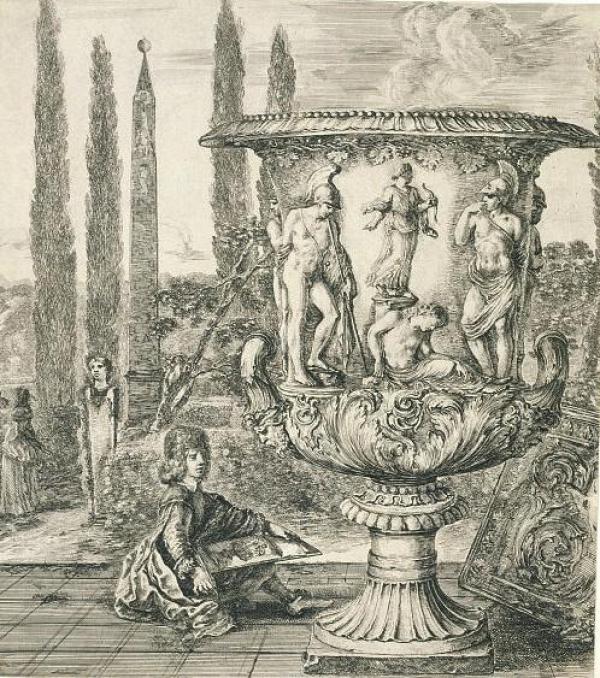Florence. Rome. Paris: the career of seventeenth-century etcher Stefano della Bella (1610-1664) led him to cities whose romance would make any present-day traveller envious. Perhaps, however, the young della Bella had an early advantage in life; he was, after all, the son of a sculptor, and born in Florence, a city whose rulers, the Medici Grand Dukes, continued to demonstrate their illustrious forebears’ appreciation of talented artists. Having impressed the Medici with his skill as a draughtsman, della Bella was awarded a court stipend which enabled him to study in Rome from 1633 to 1639, returning sporadically to Florenceto record court events, such as the funeral ceremonies of the Emperor Ferdinand II. At this time the Eternal City was undoubtedly the art capital of Europe, abundant not only in the remains of its great Classical past and Renaissance heritage but also with the innovative works of della Bella’s contemporaries; the masters of the Baroque. It was in these years that della Bella truly developed a unique personal style, characterised by a flowing freedom and informed by his many swift sketches of ancient Roman ruins, landscapes, and contemporary events, mostly executed throughout the city and surrounding countryside en plein air.
Like any young artist, however, the opportunity for travel and the prospect of experiencing life in a new cityproved an irresistible lure to della Bella in 1639, when he joined the entourage of the ambassador Baron Alessandro del Nero and travelled north to Paris. The city’s flourishing print culture and the financial success which it promised could only have offered a further incentive to leave Rome behind, and indeed the years which he spent in France would prove both artistically and commercially fruitful to the artist. While there he would attract the attention of Cardinals Armand de Richelieu and Jules Mazarin, leading to prestigious commissions such as the four sets of instructive playing cards which he produced, designed to teach the seven-year-old Louis XIV about history, geography, and mythology.
Most of della Bella’s prints date from the years he spent in Paris, and display the expanded range and increased technical ability he developed during his time there. Among his most orginal and influential works produced there are his four suites of ornamental etchings. In the suite Raccolta di vasi diversi, published in 1646, for example, della Bella combined antique vase prototypes with luxuriant foliage, and the twisting figures of mythical creatures; designs which later artists would subsequently realise in ceramic form.

Titleplate from the Raccolta di vasi diversi, published in France, 1646

Plate from the Raccolta di vasi diversi, published in France, 1646
Similarly, the exuberant melding of realistic plant forms with fantastical fauns and mermaids in his designs for cartouches and friezes in many ways looked ahead to the development of the Rococo.

Plate from the Raccolta di vasi diversi, published in France, 1646
Facing Parisian hostility to Cardinal Mazarin’s Italian protégés, Stefano della Bella returned to Italy in 1650.

Continuing his employment with the Medici, he would serve as drawing master to the future Grand Duke Cosimo III, and was elected to the Florentine literary society, the Accademia degli Apatisti, in 1656. He died in Florence in 1664.